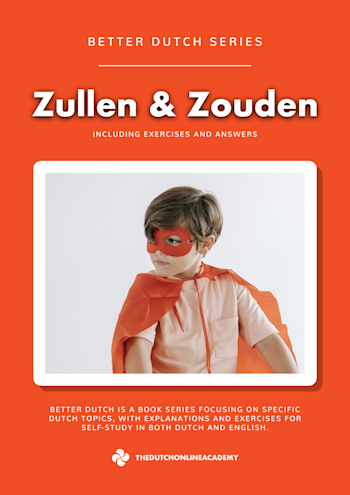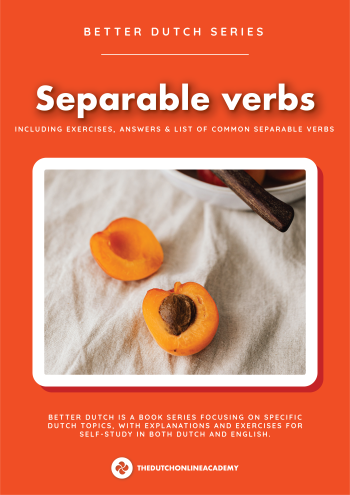Learn the theory
Indirect speech in Dutch
The indirect reason consists of a main sentence + subordinate clause.
First, let's look at an example of direct speech
- Rogier zegt: ik wil graag een kop koffie met een stuk appeltaart.
Now we take a look at indirect speech
- Rogier zegt dat hij graag een kop koffie met een stuk appeltaart wil.
As you can see, the verb is in last place in the clause. In direct speech you use dat or of a connection between the two sentences.
You use dat for announcements.
- Het meisje hoopt dat zij het examen heeft gehaald.
- Hij weet dat Berlijn de hoofdstad van Duitsland is.
- Wij denken dat we dit jaar op vakantie gaan.
- Hij zegt dat hij graag een kop koffie met een stuk appeltaart wil.
You use of for doubts or questions.
- Het meisje vraagt zich af of zij het examen heeft gehaald.
- Hij twijfelt of Berlijn de hoofdstad van Duitsland is.
- Wij weten niet of we dit jaar op vakantie gaan.
- Hij vraagt of hij een kop koffie met een stuk appeltaart kan krijgen.
You can translate of as whether. If you translate it as if, you might make the mistake of using als.
There is a third way to connect a main sentence with the indirect speech subordinate clause in Dutch: interrogatives.
- Ik weet hoe jouw broer heet.
- Ik heb geen idee wanneer jij jarig bent.
- Hij wil niet zeggen waar hij gisteren is geweest.
- Theo vraagt zich af waarom de les niet doorgaat.
- Willemijn heeft verteld wat ze afgelopen weekend heeft gedaan.
Practice with exercises
Pick DAT or OF for the subordinate clause in indirect speech.
comments
Login to leave a comment



![Learn Dutch with The double infinitive in Dutch [list of auxiliary verbs included]](https://images.ctfassets.net/f8l4gy5qxe00/7fpaN2iBE3h1xS7LRL8c0h/3bbebedc080cbf7eece73424c8e3918f/The_double_infinitive.png?w=350&h=495&q=50&fm=png)